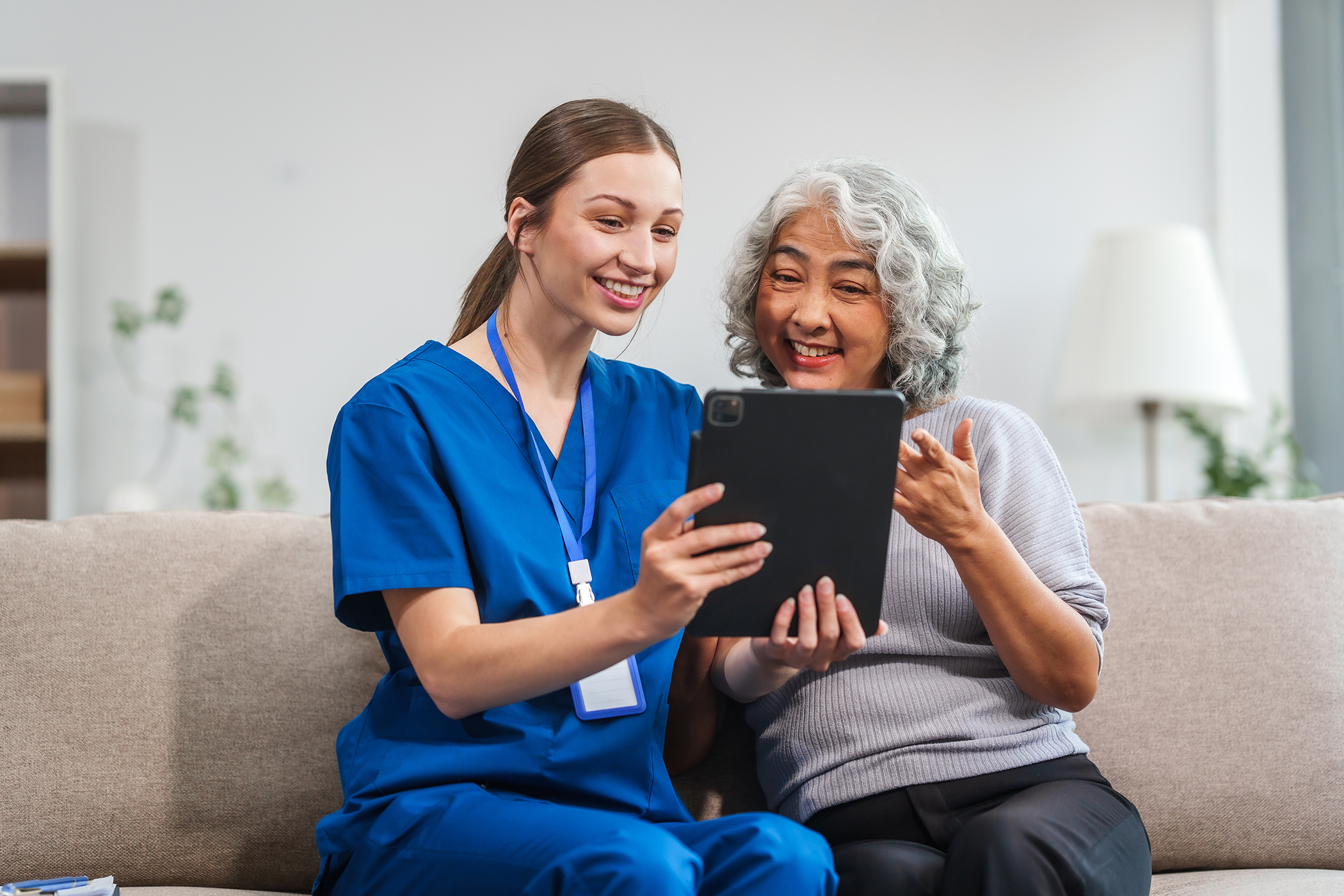As the Technology Tsunami Continues in Healthcare, We Must Ensure Physical Touch Isn’t Washed Away from Individuals Who Need It Most

It seems our answer for everything that ails healthcare in the U.S. comes back to technology. According to Rock Health, digital health startups pulled in $5.7 billion worth of funding in the first half of 2024 alone. The most recent HLTH conference was littered with technology-centric innovations launching or seeking additional investment. Additionally, there is increasing interest and excitement for in-home humanoids (robotics) for caregiving support and remote care delivery. A recent article in Nature outlined how ‘zero interaction’ solutions are creating ‘digital exhaust. The technology tsunami is relentless.
As we are awash in innovation and riding wave after wave of technology aimed at improving the delivery of care, many experts and practicing physicians across the country are voicing apprehension and worrying that we are losing touch with the critical concept of physical touch.
“Patient care isn’t a technology product; it’s a deeply personal service industry.” Those are the words of Dr. Leah Houston as she examined the recent closure of Forward, a tech-focused primary care startup who hauled in $100 million before shutting its doors. Dr. Houston is founder and CEO of Humanitarian Physicians Empowerment Community (HPEC), and also an emergency room physician.
During a keynote at AHIP, Dr. Abraham Verghese, a noted physician and author, cautioned the crowd that personal doctor-patient relationships will be lost amid technological advancements. He likened AI as being just as profound to healthcare as antibiotics, but at the same time expressed concern about the sheer volume of data that is being unearthed by technology. He suggested that there is so much data it is eclipsing the patient and taking clinicians away from being with the person in front of them.
Writing for Stat News, Dr. Alexa B. Kimball discussed the disappearance of empathetic touch in medicine. Dr. Kimball is CEO of Harvard Medical Faculty Physicians at Beth Israel Deaconess Medical Center in Boston. She cited scientific studies proving that human touch is important to our mental and physical well-being. And that in healthcare today, we have far too little touch being used in the care process.
Dr. Frank Boehm is professor of obstetrics and gynecology, and chairman of the ethics committee at Vanderbilt University Medical Center. In an article for the American Academy of Family Physicians, he said, “In an increasingly technological medical environment, the importance of human touch can easily be overshadowed by the latest, greatest drugs and therapies. But high tech demands more touch, not less.”
To summarize, nothing can replace a warm hand, kind eyes, open ears and a reaffirming smile. No technology out there can fully replace human touch in the delivery of healthcare. This is specifically true for older adults, who are already losing touch in many other areas of life.
According to a recent poll by the University of Michigan one in three adults age 50–80 (34%) feel isolated from others, while 37% feel a lack of companionship and 33% reported infrequent contact with people from outside their home. This population is experiencing reduced face to face interactions. Facetime visits with family or friends instead of an unexpected pop in. Groceries and goods dropped at the doorstep instead of the social experience of shopping. So many interactions have been digitized and automated. The more we rely on technology to engage with older adults in healthcare, the more we exacerbate the issue.
It would be borderline absurd to suggest we avoid leveraging technological advancements. From virtual visits to AI, we need to strongly integrate innovations into healthcare. Our company invests heavily in technology to fortify the care we deliver in the home. But at the same time, technology cannot be a crutch or a solution in lieu of human touch, especially when we’re serving older, sicker adults. We can’t say to patients, “Here’s your wearable device. The AI will prompt you when there’s a problem. I’ll check in with you on a video call next quarter. Good luck.”
Moving forward, the best and brightest solutions will be a blend of tech and touch. They will find creative ways to maintain humanity in healthcare. Because without physical touch, the most innovative technologies will fall far short of their intended aims, leaving behind patients who need help the most.
Want to learn more about how Belle fuses tech and touch to create unprecedented engagement for older adults? Click here to schedule a 1:1 meeting.